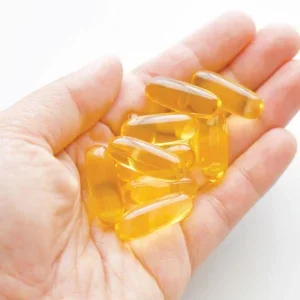
Around 600 million. That’s how many people around the world are currently suffering from osteoarthritis – and it’s a figure that looks set to rise dramatically over the years ahead. If, after all, our planet hosted some 256 million sufferers in 1990, there could be almost a billion by the middle of the century. There are, of course, a range of explanations here, from ageing populations and obesity to simple demographic growth. But if this plethora of socioeconomic factors explains the headline statistics, the actual science of osteoarthritis can plausibly be summarised in a single word: cartilage.
Cartilage, after all, is the strong connective tissue that protects the joints and bones. When this material breaks down, osteoarthritis soon follows, with bones rubbing against each other and causing pain and discomfort for individuals. While healthy diets and regular exercise can do much to protect cartilage organically, it equally makes sense that osteoarthritis patients and their doctors are constantly on the hunt for more proactive solutions too.
And with chondroitin sulphate, they might just have found it. A chemical found naturally in humans and animals, it’s one of the building blocks of cartilage. It goes without saying, then, that adding more to the body could do much to stymie osteoarthritis, even as it may help the fight against cataracts too. Yet if the global market for chondroitin sulphate was already $1.5bn in 2022, a figure which could rise by about $500m by 2032, obstacles clearly remain. For one thing, the chemical’s purity has a large impact on its practical effects, meaning patients should be careful when choosing their source. For another, and as so often in the ingredients space, the medical evidence in favour of chondroitin sulphate remains positive but inconclusive – even if its ultimate place in the ingredients canon is probably guaranteed.
A century of promise
We’ve known about chromium sulphate – and its potential benefits – for a while. First obtained from cartilage back in 1861, it was isolated in a purer form a few decades later. Dovetailed with the steady rise of osteoarthritis, the subsequent century has seen it reach the high peaks of medical promise. In 1997, to give one example, a bestselling book pinpointed it as a cure for arthritis. That, in turn, has led to a scientific bonanza, with researchers rushing to extract the chemical from cow, pig and shark cartilage. Synthetic chondroitin sulphate is proving popular too: a cavalcade of companies, from India to Italy, now produce it in labs, even as the NIH estimates that 6.5 million Americans take chondroitin or similar anti-arthritis supplements.
Perhaps unsurprisingly, the easiest way to understand this boom is through its purported health benefits. “One of the major applications of chondroitin sulphate is the treatment of osteoarthritis,” says Dr Yves Henrotin, a professor of pathology, physical therapy and rehabilitation at the University of Liège in Belgium, describing it as “very important” for both the composition and the mechanical properties of bodily tissue. In practice, meanwhile, things are shepherded along because the chemical is so good at absorbing fluids like water into the cartilage. And if that helps keep the tissue strong, chondroitin sulphate equally blocks enzymes that break cartilage down.
Whatever the scientific evidence, at any rate, Henrotin’s view is echoed by an increasing body of work. In 2023, for instance, a major review in the journal Cureus found that chondroitin sulphate supplements ‘may have clinically significant benefits’ if standardised properly. That’s reflected by its potential to offer pain relief, with one 2016 paper suggesting it’s especially effective when combined with glucosamine. Nor is osteoarthritis necessarily the only ailment to benefit from the chondroitin treatment, with a study in 2023 investigating the links between the cartilage chemical and successful cataract surgery.
No less important, Henrotin adds, is the way pushing chondroitin sulphate could potentially reduce patient reliance on riskier alternatives. “The advantage of chondroitin sulphate,” he explains, “is also to decrease the consumption of older drugs with a lot of adverse effects – including for example paracetamol. This is a key target in the management of osteoarthritis, even if we aren’t convinced by the efficacy of these kinds of compounds.”
Medical conditions
That last reflection is surely worth dwelling on. For if marketers are keen to push chondroitin sulphate as a kind of miracle cure – an argument shadowed by professional scientists to varying degrees of enthusiasm – the chemical equally suffers from a blight common to the ingredients sector: a lack of conclusive evidence. “There is,” he emphasises, “great heterogeneity in the preclinical and clinical data.” Fair enough: whatever the potential strengths of chondroitin sulphate, a 2022 analysis of eight studies, encompassing some 4,000 knee osteoarthritis patients, found no conclusive proof that the chemical offered any major benefits. It’s a point mirrored in more practical medical settings too. In the UK, for instance, doctors no longer prescribe chondroitin on the NHS because ‘there’s no strong evidence’ it’s an effective osteoporosis treatment.
600 million
The approximate number of people currently suffering from osteoarthritis worldwide.
The Lancet
How to explain this divergence between a soaring market on the one hand – and clinical ambivalence on the other? For Henrotin, fundamental is the sheer variety of chondroitin sources. As he puts it: “They’re different formulations, with different concentrations, different origins and different sulphitations.” That, it should be obvious, makes robust experimentation challenging, with scientists sometimes finding they’re comparing the chemical equivalent of apples and oranges. Just as crucial, Henrotin continues, is the way this panoply of powders sparks uncertainty among the wider medical community. The heterogeneity of the formulation, the number of products in the market, the difference between overthe- counter solutions and prescription drugs – all this, Henrotin says, “creates a lot of confusion in the minds of healthcare professionals and scientists.”
Another factor here is the potential for side effects. To be clear, most of the evidence suggests that chondroitin sulphate is safe overall, with Henrotin describing the chemical as inducing a “very low-level of side effects” among individuals. All the same, the public should surely be cautious. Given long-term chondroitin sulphate may raise glycemia levels, the academic warns that prediabetic people are especially susceptible here. And when taking the chemical can cause stomach pain, diarrhoea, and nausea – and could perhaps, in more serious cases, provoke the spread or recurrence of prostate cancer – osteoarthritis sufferers should doubtless be careful.
Programmes of care
With such a muddled and contradictory situation, what can we expect of chondroitin sulphate in future? All things considered, Henrotin seems broadly optimistic, laying out a potential programme of treatment for people with osteoarthritis. “Personally,” he says, “I think it’s reasonable, in clinical practice, to trya product with a well-defined, clinically tested formulation for three months, and evaluate its effects before extending its treatment administration.” If it seems to be working, treatment can continue until the patient is satisfied. Finally, Henrotin leaves open the possibility that people may need to return for more treatment if needed.
$1.5bn
The value of the global market for chondroitin sulphate in 2022, a figure expected to rise significantly over the next decade.
Straits Research
Moderate in their scope – and time-limited in their scale – schemes like this could yet transform medical life. There are signs, meanwhile, that medical regulators are indeed moving this way. After all, chondroitin sulphate is now approved as an ethical drug across several EU countries, including Poland and Spain. For Henrotin, any change in recommendations must be supported by more conclusive clinical studies and a better understanding of chondroitin sulphate’s mechanisms of action. “It’s very important,” he says, “to make the link between the evidence – and the product that you prescribe.”
In practice, for that to happen requires a better understanding of what different types of chondroitin sulphate can do, with scientists needing to distinguish between examples by origin, purity and contamination with by-products. Nor, Henrotin adds, should medical professionals neglect other antiosteoarthritis measures too. Diet and education both matter here, with people who eat a lot of fruit and vegetables probably less susceptible to osteoarthritis than their unhealthy kin. Exercise shouldn’t be ignored here either, especially given the obvious links between joint health and someone’s ability to walk, run, or cycle. “Chondroitin sulphate” therefore Henrotin says, “could be used to promote physical activity – but not to substitute it.”
To put it differently, we surely shouldn’t see chondroitin sulphate as a panacea, whatever the medical consensus ultimately becomes. But that hardly means we shouldn’t be excited about the chemical. Henrotin, for his part, is surprised about the relative lack of research into how chondroitin sulphate could stimulate the so-called ‘extracellular matrix’ – the network of proteins and other molecules that bolster cells and tissues – especially when compared to other areas like enzymes. Considering how many people will struggle with osteoarthritis over the next few decades, there’s surely not a moment to waste.





